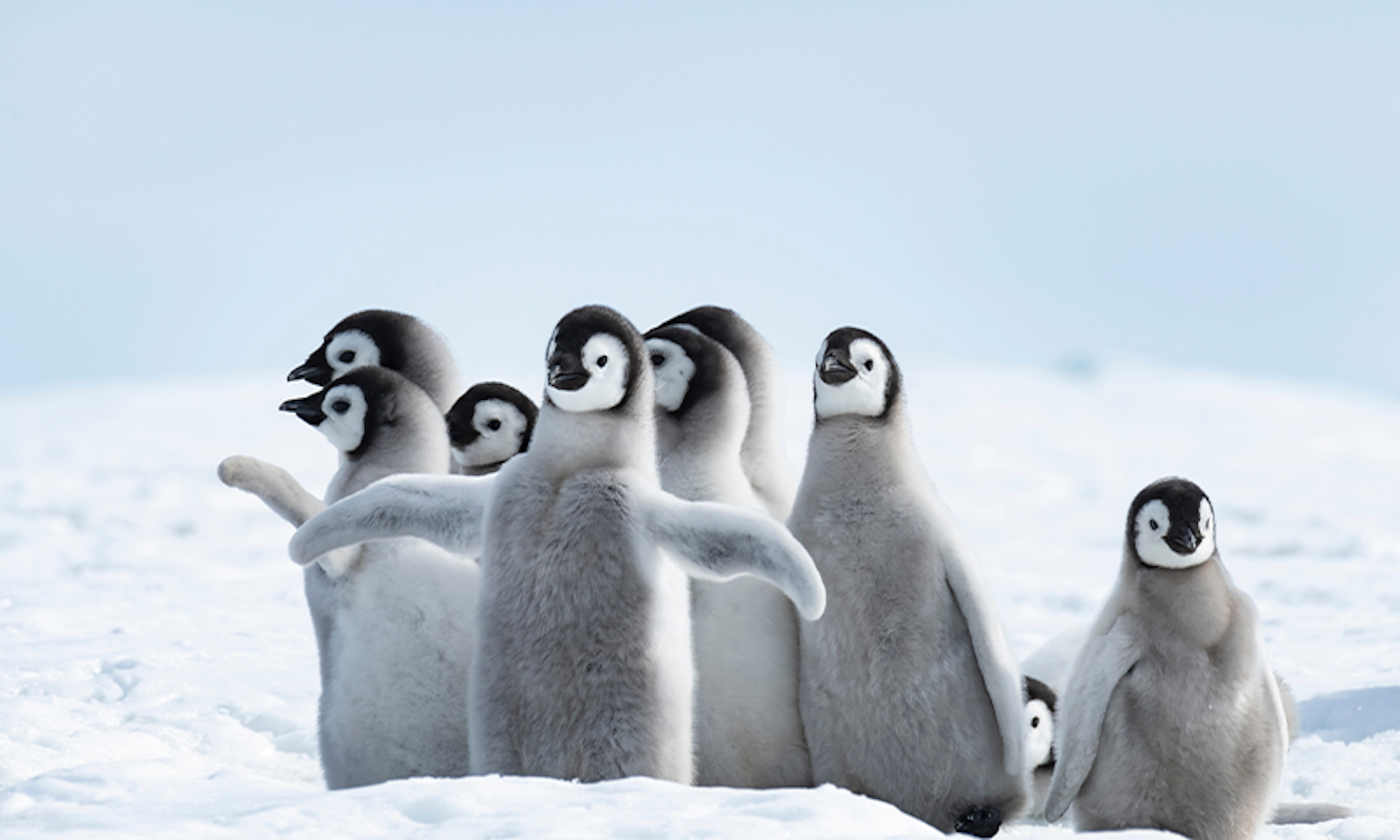Emperor penguins brood among some of the harshest conditions imaginable. They shelter their eggs from the biting winter Antarctic winds by nesting in colonies surrounded by ice cliffs in locations so remote and inaccessible, humans hardly ever disturb them. But emperor penguins, which number near 600,000, aren’t completely safe from the ways we are shaping their homes: Human-caused climate change is disrupting the delicate timing of ice and seasons on which the breeding period of emperor penguins depends.
A new paper shows this in dramatic fashion: For the first time, scientists have recorded colonies of emperor penguins suffering a “catastrophic” failure to rear their chicks as a result of losing their sea ice. It’s not quite clear how many penguin chicks were lost during last year’s breeding season, but judging from the size of the colonies the penguins abandoned, it’s likely between 6,000 to 9,000.
Emperor penguins lay their eggs in the Antarctic autumn and incubate them through the winter, huddling together to withstand extreme winter conditions and warm their eggs. The eggs hatch in August, at the beginning of the southern spring. Chicks grow during the long days of summer and typically fledge, or develop their waterproof swimming feathers, in December. All of this usually happens on what is known as “land-fast” sea ice, which is attached to the coast of the continent and is typically thick enough to last through the entire eight-month breeding season (the longest among penguins). Close to the sea, they can forage for food and still easily return to their colony—and chicks.
Antarctica is a vast continent with a diverse geography, and its response to climate change has been similarly wide-ranging. In some isolated regions, sea ice has actually expanded, but that’s not the overall trend. The last two years have marked the lowest sea ice extent for the continent as a whole since satellite monitoring began 45 years ago.
Gone were the guano stains—replaced by the inky blue of the Southern Ocean.
Using satellite imagery, researchers at the British Antarctic Survey monitored five known emperor penguin colonies (many more ring the continent’s periphery) on the west side of the Antarctic peninsula, in the Bellingshausen Sea. Since this remote monitoring of these colonies began in 2009, ice breakup has caused individual colonies to collapse in isolated instances. But the scale of this latest incident is unprecedented.
Peter Fretwell, a scientist at the British Antarctic Survey whose work involves geospatial analysis and remote-sensing technology, led the research alongside his colleagues Aude Boutet and Norman Ratcliffe. By the telltale brown stains of excrement, or guano, on an otherwise white expanse, they were able to identify when and where the penguins were active. Over the course of the 2022 season, that sign of activity vanished. In four of the colonies, gone were the guano stains, and the ice fields themselves—replaced by the inky blue of the Southern Ocean, or scattered ice pieces unsuited for a breeding colony.
Losing their land-fast sea ice before December means that the penguins’ chicks were, in all likelihood, not able to survive: The chicks grow thick down feathers to help insulate them against the cold—but down is not waterproof. Chicks cannot survive partially or fully submerged in the frigid water until their end-of-the-year fledging period.
Changes in sea-ice dynamics don’t always have to dissolve the ground beneath a penguin’s feet to have an impact on their breeding effort. Ice melt and warmer temperatures can also make it impossible for penguins to access their colonies. For example, one site the researchers monitored, which is estimated to have had as many as 1,200 breeding pairs of emperor penguins in recent years, had a snow ramp from the sea ice to the ice shelf that the penguins used to get between the ocean and their colony. Even though the ice shelf remained intact throughout the breeding season, once the sea ice broke up, it may well have destroyed the penguins’ access ramp and possibly led them to abandon the colony.
Emperor penguins have some ability to shift where they breed to adjust to their environment, but they have to hew close to the coast to limit how much energy they spend foraging and their exposure to the cold. It now seems likely that the warming effects of climate change on the penguins’ icy habitat will severely test their resilience. ![]()
Lead photo: vladsilver / Shuttertock




























